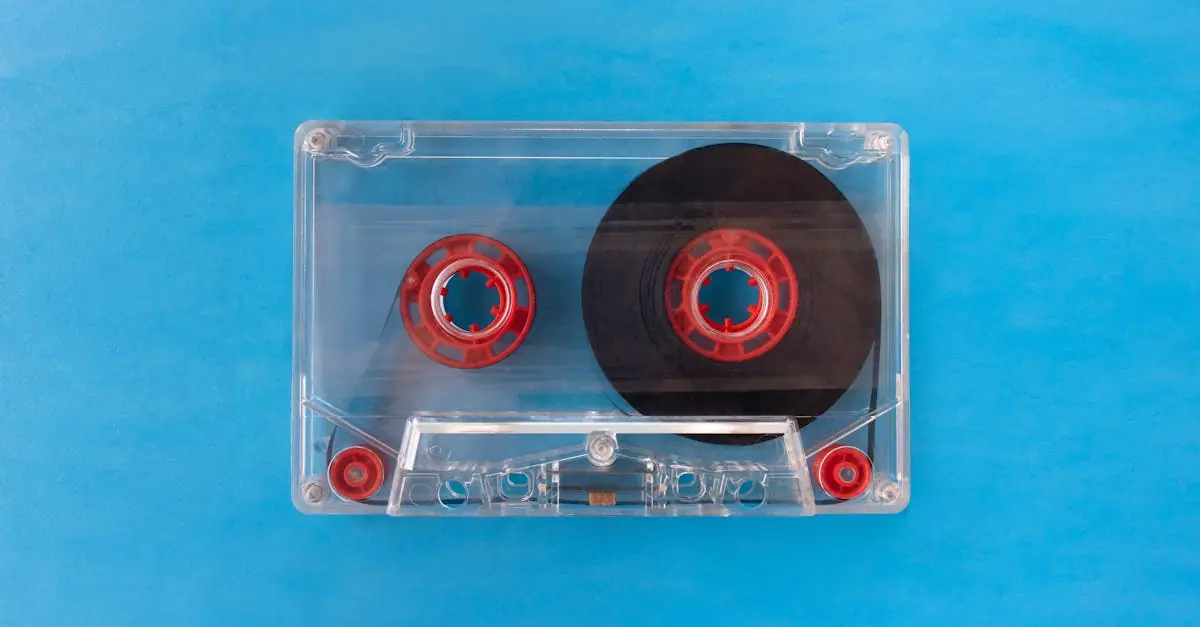In the ever-evolving world of design, a Figma style guide template is like that trusty Swiss Army knife every designer wishes they had. It’s not just a collection of colors and fonts; it’s the secret sauce that transforms chaos into cohesive brilliance. Imagine a world where your design team speaks the same visual language, avoiding the dreaded “what shade of blue is this?” confusion.
Table of Contents
ToggleOverview of Figma Style Guide Template
A Figma style guide template serves as a crucial resource for designers in any project. This template includes key elements such as typography, color schemes, and UI components. Designers use it to maintain consistency throughout their designs.
Organizing visual assets within the template streamlines the workflow. Designers can quickly refer to the style guide instead of searching for assets individually. By utilizing a style guide, teams ensure that all members adhere to the same visual standards.
Figma’s capabilities allow users to customize their style guides easily. Color palettes can be adjusted based on brand requirements. Similarity in font usage enhances readability and strengthens branding across different platforms.
This template also allows for quick updates. When brands refresh their visual identity, the style guide can adapt without starting from scratch. Regularly revised style guides contribute to a coherent brand presentation.
Effective collaboration becomes easier with a shared style guide. Designers and developers can align with the same vision, reducing misunderstandings. Clear documentation of design decisions supports better communication within teams.
Accessibility features can also be integrated into the Figma style guide template. Designers can ensure compliance with usability standards, making products available to a wider audience. Prioritizing inclusive design from the beginning fosters a positive user experience.
Utilizing a Figma style guide template significantly enhances the design process. It promotes efficiency while minimizing discrepancies in visual output. Designers who invest in creating a comprehensive style guide boost their team’s productivity and project outcomes.
Key Features of Figma Style Guide Template
A Figma style guide template offers multiple essential features that streamline the design process and enhance collaboration among teams.
Customization Options
Customization options play a crucial role in adapting the style guide to specific brand identities. Designers can modify typography, color palettes, and UI components to align with brand aesthetics. Flexible design elements ensure that each component reflects the brand’s personality while maintaining coherence across projects. Style guides can incorporate unique logos, iconography, and imagery, allowing for a tailored experience. Quick updates to design features facilitate responsiveness to brand changes without starting from scratch. By providing such options, Figma supports design continuity and strengthens brand recognition.
User-Friendly Interface
A user-friendly interface enhances the overall experience for designers using the Figma style guide template. The intuitive layout simplifies navigation, making it easy to locate specific assets and components. Drag-and-drop functionality allows designers to arrange elements effectively, streamlining the design process. Built-in search features enable quick access to all style guide resources, reducing time spent on searching for assets. Clear labeling and organized categories further improve usability. By prioritizing user experience, Figma empowers teams to focus on creativity and collaboration, fostering a more productive design environment.
Benefits of Using a Figma Style Guide Template
A Figma style guide template offers numerous advantages that enhance the design workflow. Primarily, it ensures that design elements remain consistent throughout projects.
Consistency in Design
Consistency in design results from using a Figma style guide template. Designers can maintain uniformity by referring to established typography and color schemes. Each team member adheres to the same guidelines, which prevents visual discrepancies. Elements such as buttons, icons, and spacing follow predefined standards, creating a coherent look. Users experience familiarity across different pages and products, improving overall usability. Brand identity becomes recognizable due to consistent application of design principles. In turn, teams spend less time making decisions about visual elements, allowing them to focus on creativity and innovation.
Improved Collaboration
Improved collaboration stems from a shared Figma style guide template. Teams access a centralized resource, which aligns designers and developers with a collective vision. Each member benefits from clear documentation of design decisions. This clarity reduces misunderstandings during the development process. Real-time updates ensure everyone works with the latest version of the style guide. Additionally, feedback can be integrated more effectively, as the style guide serves as a reference point for discussions. Overall, collaboration flourishes when every team member operates from a consistent foundation, fostering a more productive design environment.
How to Create a Figma Style Guide Template
Creating a Figma style guide template involves several key steps to ensure clarity and effectiveness.
Step-by-Step Process
- Define brand elements. Start with defining core brand colors and typography choices.
- Organize UI components. Compile buttons, icons, and input fields for consistent usage.
- Document spacing guidelines. Specify margins and padding to maintain design harmony.
- Implement visual assets. Add images, logos, and other assets that represent the brand.
- Share with stakeholders. Distribute the style guide among team members for feedback and adjustments.
Tips for Effective Style Guides
- Keep it simple. Focus on essential elements to avoid overwhelming users.
- Use clear language. Ensure that terminology accurately conveys meaning.
- Foster collaboration. Encourage input from designers and developers to enhance the guide.
- Update regularly. Schedule periodic reviews to reflect any brand changes.
- Prioritize accessibility. Ensure that color choices and typography meet usability standards.
Embracing a Figma style guide template transforms the design workflow by fostering consistency and collaboration. Its ability to unify visual elements and streamline communication empowers teams to work more efficiently. With customizable features designers can easily adapt the guide to reflect their brand’s identity while ensuring accessibility standards are met.
Utilizing this template not only enhances productivity but also strengthens brand recognition across various platforms. By prioritizing clarity and organization in design assets teams can focus on creativity and innovation. A well-structured style guide serves as a foundation for successful design projects, making it an invaluable resource for any design team.










